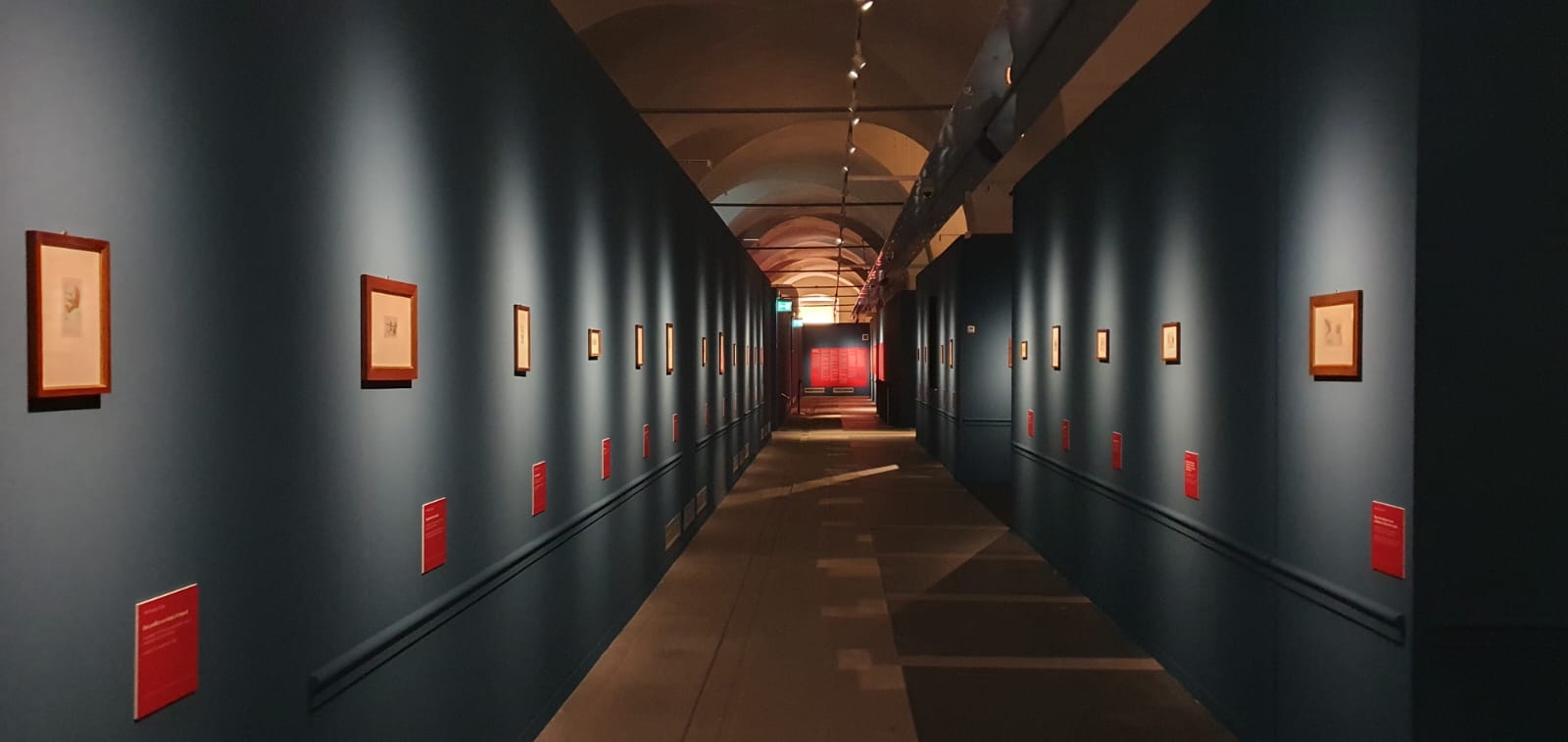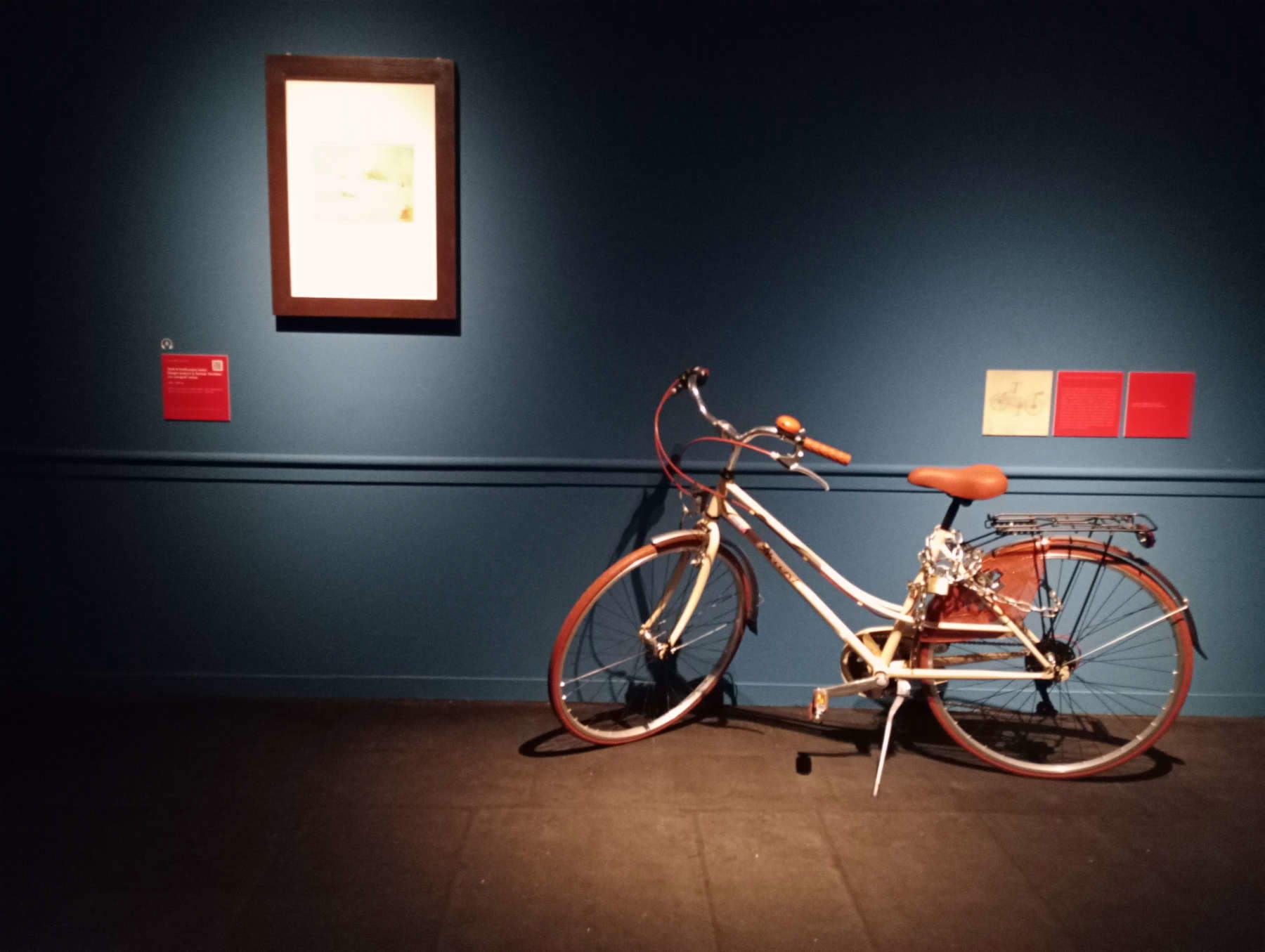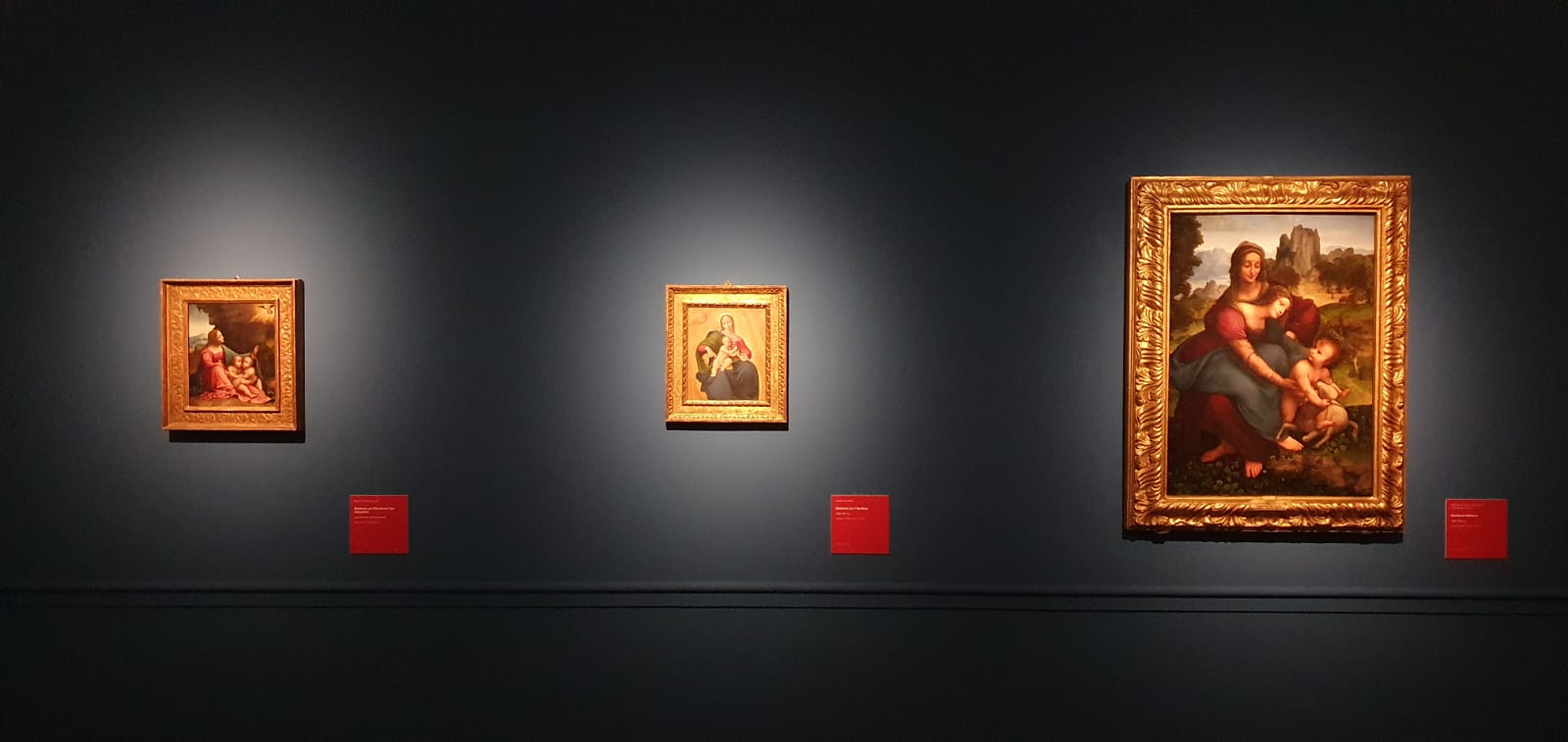Needless to get around it: they have a problem with exhibitions in Livorno . After last year’s lousy Banksy show , a laughable parade of twenty-six multiples by the British street artist that replicated a format already seen and revised far and wide throughout Italy, it was hoped that the Museo della Città, with a new management, would forget that senseless experiment and go back to doing what the main museum of a major city should do: produce quality, high-level exhibitions. Nothing: hopes have been frustrated by an event that focuses again on the “big name,” this time that of Leonardo da Vinci, only to propose to the public a picky exhibition, which stands on a’shaky scaffolding, despite several good ideas that could have been better put to good use, perhaps with slower, more thoughtful and better propped up work than has been done in preparation for this review, unable to find a common thread that holds its many pieces together.
More than a well-thought-out and balanced exhibition, Leonardo da Vinci. Beauty and Invention (this is the title of the exhibition that can be visited until April 1 at the Bottini dell’Olio) in fact seems like a collage of many different and unconnected exhibitions: an initial introduction on the relations between Leonardo da Vinci and the Leghorn coast, which should moreover serve as a justification for the whole ’Operation Leonardo in Leghorn,’ a parade of folios from the Atlantic Codex, a small collection of works that should testify to the suggestions that Leonardo provided to twentieth-century and contemporary artists, a nucleus of Leonardo’s drawings and paintings, and finally the engravings of Wenceslaus Hollar lent by the Pedretti Foundation. A conglomeration of material that is too heterogeneous to be exhibited in an itinerary that has a common soul, and which would have been interesting, moreover, to develop small thematic focuses: this is demonstrated by the fact that a separate exhibition was dedicated to Hollar’s engravings in 2019, which was held in the premises of the Pedretti Foundation in Vinci and which benefited from effective comparisons with autograph sheets by Leonardo and other artists in his circle.
Besides, is it really useful to organize yet another exhibition on Leonardo da Vinci just four years before the 2019 celebrations, when there have been exhibitions on Leonardo all over Italy, many of them, moreover, within a short distance from Livorno and centered on the same topics? The example is, rightly, that of the Vinci exhibition, but one could recall the Uffizi exhibition with the Leicester Codex sheets, the one in Sansepolcro dedicated to the theme of flight, the one in Montepulciano on the relationship between Leonardo and the territory, and so on. After such a Leonardesque drunkenness, something more and better structured was needed, be it even an entire exhibition on Leonardo’s twentieth-century legacy: it certainly would not have drawn crowds (but neither, it seems, is Beauty and Invention : with two thousand visitors in the first ten days, according to the mayor’s stated figures, the numbers were almost halved compared to the Banksy exhibition, which attracted three thousand people in the same period), but at least it would have had a more solid layout. Admittedly, this year is traveling on a much higher standard than the Banksy exhibition, and the young curator Sara Taglialagamba has done an impeccable scientific work and also a good curatorial work to find a thread in the best organized part of the exhibition (the one with Leonardo’s sheets) and to convey to the public the content of the sheets in the best possible way (those who wish, moreover, are given the possibility to delve deeper with QR codes that allow downloading the catalog cards related to the folios, an interesting idea).



The contents of the first part of the exhibition are good, but we are a long way from the goal, stated in a city council note, of “offering the opportunity to immerse oneself in the artist’s mind by delving into his relationship between drawing and painting,” partly because important areas of Leonardo’s graphic production are missing (for example, the studies on natural phenomena are not adequately represented: the visitor will find just a sheet with annotations on the flight of birds, the Codex on the Flight of Birds itself, and a sheet with some notes on movement on an inclined plane: the bulk of the material consists of war or engineering studies), and partly because there are no paintings in the exhibition that can help the public understand this relationship. Neither is there the sheet that should have been the great protagonist of the exhibition, number 31645 of the Central Institute for Graphics, present in Livorno only in facsimile (too delicate for the trip): to realize its absence, however, it is necessary to go in person to visit the exhibition and read the relevant caption, since in the press releases the information was not emphasized. The drawing has been known for a long time, but on the occasion of this exhibition its provenance was traced, thanks to the excellent work of Massimo Signorini, who reconstructed the sheet’s steps before it entered the state collections: after 1915, the drawing was given by the Turin painter Giuseppe Bocciarelli to the Livorno collector Ilo Giacomo Nunes, after which, on February 15, 1921, the Ministry of Education notified thework, and a few years later, around 1925-1926, Nunes offered the drawing to Paul Joseph Sachs, director of the Fogg Art Museum, who purchased it after the state granted permission for it to leave the country. Sachs, realizing the importance of the sheet, in a burst of exceptional generosity donated it to the Italian State, on the condition that it always be displayed with the inscription “gift from the Fogg Art Museum of the University of Cambridge to the Italian State.” Then, between 1937 and 1938, Minister Giuseppe Bottai’s decision to give the paper to the Central Institute for Graphics. The exhibition credits Nunes with an important role in safeguarding the work, since giving it to Sachs sheltered it from Fascist expropriations of Jewish families’ property as a result of the racial laws (the Nunes family was of Jewish origin).
The exhibition displays a small nucleus of documents (letters, photographs, newspaper articles) supporting the reconstruction: however, the paper is missing, which can only be appreciated through a reproduction. And similarly reproduced is the most concrete evidence of Leonardo da Vinci’s passage on the Tuscan coast, namely the map of Windsor sheet RL 12683r, despite the fact that the exhibition opens with an account of the artist’s visit to the fortresses of Verruca and Librafratta to study a possible hydraulic work that would divert the course of the Arno from Riglione, near Pisa, to Stagno, just outside Livorno. The heart of the exhibition is limited to a group of sheets from the Codex Atlanticus, gathered around a couple of plans that attest to Leonardo’s presence in Piombino, although the material gathered at the Museo della Città di Livorno is actually quite varied. The itinerary opens with three folios dedicated to studies for war machines (a ballista, a catapult, two drawings for bombards) that introduce the theme of Leonardo as a military designer and ideally lead to the only two folios in the exhibition related to the artist’s presence in the territory. The first is folio 48v-a, with studies of fortifications for Piombino, where Leonardo sketches a star-shaped rampart proposing various solutions for the city’s defense: the artist had been commissioned by the Republic of Florence, in 1504, to think of a project for the fortress of Piombino on behalf of Jacopo IV Appiani, lord of the coastal city, an ally of the Florentines. The drawing shows an innovative Leonardo, up to date with the theories of Francesco di Giorgio Martini, an experimenter also in the field of military engineering works. We then come across folio 48r-b, in which other studies of fortifications are observed, for which Leonardo imagines circular forms inspired, again, by Francesco di Giorgio Martini’s fortresses (in the sheet there are also two plans of a square fortress with rivellini quite similar to the Rocca Sforzesca in Imola, where Leonardo had worked as a military engineer). The same sheet is then known for the presence, on the verso, of some obscene drawings and especially for the very famous sketch of the bicycle, although in the catalog Sara Taglialagamba and Valentina Burgassi clarify that this figure is “to be understood as absolutely a modern forgery,” a conclusion to which almost all critics have come. Yet this did not prevent the curious display of a very ordinary walking bicycle (complete with a big padlock: who knows if the organization thought that someone could leave the corridors of the City Museum riding it unnoticed) right in front of the sheet of the Atlantic Codex: now, since on the eve of the exhibition the councillor for culture was seized by competitive cravings ("we have four more drawings than the most impressive exhibition ever held in Washington DC“!), it would be interesting to know if there was also a Graziella in the U.S. capital to accompany Leonardo da Vinci’s sheets. Perhaps, however, they are not ”pop" enough over there, a term used by the museum on social media to justify the presence of the bike, whatever they mean.
When in doubt, one can continue along the path: having exhausted the designs of the engineer Leonardo, the exhibition unfolds a sequence of sheets devoted to the most diverse topics, from a study for the tiburium of Milan Cathedral to a drawing of a press with numerical calculations, from a figure of a polyhedron to a study for a machine for making ropes to a sheet with drawings of flag-like objects thrown into the air. Hence, a corridor that hastily deals with the subject of Leonardo’s legacy in the twentieth century (there are some papers by Lucio Fontana owned by the Museum of the City of Livorno, while the rest of the section are some works from the permanent collection, left in place, thus far from the exhibition rooms, to which cartouches have been affixed for the occasion: you find out just by visiting the permanent collection) leads to the room where the Codex on the Flight of Birds is displayed, linked to a “digital section” where a video shows the attempt, by the Laboratory of Perceptual Robotics at Sant’Anna in Pisa, to animate Leonardo’s studies. We turn back and end the visit with the section that brings together a sparse nucleus of Leonardo’s paintings (which certainly do not shine in quality) and drawings also made by his pupils, and with the concluding chapter in which the seventeenth-century engravings by Wenceslaus Hollar mentioned above are displayed.
![Leonardo da Vinci, Ballista operated by twisting ropes and four leaf springs (c. 1485, inscriptions added later 1497-1500 or after 1500; metal point, pen, ink and watercolor touches, 172 × 305 mm; Milan, Veneranda Biblioteca Ambrosiana, Codex Atlanticus, f. 51v-b [145r]) Leonardo da Vinci, Ballista operated by twisting ropes and four leaf springs (c. 1485, inscriptions added later 1497-1500 or after 1500; metal point, pen, ink and watercolor touches, 172 × 305 mm; Milan, Veneranda Biblioteca Ambrosiana, Codex Atlanticus, f. 51v-b [145r])](https://cdn.finestresullarte.info/rivista/immagini/2024/2582/leonardo-da-vinci-codice-atlantico-145r)
![Leonardo da Vinci, Studies of fortifications for Piombino (c. 1503-1504; black stone repassed in pen and ink, 274 × 204 mm; Milan, Veneranda Biblioteca Ambrosiana, Codex Atlanticus, f. 48v-a [134r]) Leonardo da Vinci, Studies of fortifications for Piombino (c. 1503-1504; black stone repassed in pen and ink, 274 × 204 mm; Milan, Veneranda Biblioteca Ambrosiana, Codex Atlanticus, f. 48v-a [134r])](https://cdn.finestresullarte.info/rivista/immagini/2024/2582/leonardo-da-vinci-codice-atlantico-134r)
![Leonardo da Vinci, Studies of Fortifications (c. 1502-1503; pen and ink, 221 × 300 mm; Milan, Veneranda Biblioteca Ambrosiana, Codex Atlanticus, f. 48r-b [133r]) Leonardo da Vinci, Studies of Fortifications (c. 1502-1503; pen and ink, 221 × 300 mm; Milan, Veneranda Biblioteca Ambrosiana, Codex Atlanticus, f. 48r-b [133r])](https://cdn.finestresullarte.info/rivista/immagini/2024/2582/leonardo-da-vinci-codice-atlantico-133r.jpg)
![Leonardo da Vinci, Study for the tiburium of Milan Cathedral with notes and calculations (c. 1487-1490; black stone repainted in pen and ink, 332 × 293 mm; Milan, Veneranda Biblioteca Ambrosiana, Codex Atlanticus, f. 310r-a [850r]) Leonardo da Vinci, Study for the tiburium of Milan Cathedral with notes and calculations (c. 1487-1490; black stone repainted in pen and ink, 332 × 293 mm; Milan, Veneranda Biblioteca Ambrosiana, Codex Atlanticus, f. 310r-a [850r])](https://cdn.finestresullarte.info/rivista/immagini/2024/2582/leonardo-da-vinci-codice-atlantico-850r.jpg)
![Leonardo da Vinci, Figure of semi-regular polyhedron, Archimedean: icosidodecahedron (c. 1498?;, pen and ink, traces of stippling, 178 × 123 mm; Milan, Veneranda Biblioteca Ambrosiana, Codex Atlanticus, f. 263r-b [707r]) Leonardo da Vinci, Figure of semi-regular polyhedron, Archimedean: icosidodecahedron (c. 1498?;, pen and ink, traces of stippling, 178 × 123 mm; Milan, Veneranda Biblioteca Ambrosiana, Codex Atlanticus, f. 263r-b [707r])](https://cdn.finestresullarte.info/rivista/immagini/2024/2582/leonardo-da-vinci-codice-atlantico-707r.jpg)
Leonardo da Vinci. Beauty and Invention is being sold to the public as a “great exhibition,” a “great event,” but we are far from any sign of greatness: in the end, we are simply dealing with a group of folios being transferred from the Biblioteca Ambrosiana in Milan, where the “great exhibition” in Livorno is, one might say, a daily occurrence, since the Federiciana Room of the Ambrosiana always displays, in rotation, the folios of the Codex Atlanticus. Everyone can see them whenever they want. It is not even such a remote occurrence that small groups of ten to fifteen drawings are loaned out (the last time in Tuscany was also in 2019, when twelve sheets were exhibited in Florence, in the Sala dei Gigli in Palazzo Vecchio). Anything but a major exhibition, in short: as was the case last year for Banksy, in 2024 Livorno is merely tagging along, putting itself forward as yet another city hosting a selection of sheets from the Codex Atlanticus. And the material that accompanies the sheets at the Ambrosiana is really insufficient to put together not already a must-see exhibition, which would have been asking too much, but at least a linear review, without disconnected jumps between one section and another, without a path with so many dissonances.
A pity, because the bump in the road (Banksy) could also have been contemplated: with a second disappointing exhibition, the risk is to make the Museum of the City of Livorno further lose an orientation that in previous years had been uniform, limpid, original, first with the exhibition on Modigliani, which, even with all its limitations, could still mark the start of a path, then with two quality exhibitions such as those on Puccini and Grubicy that had outlined an excellent direction. After that, there was the involution, and losing the awareness of a direction would mean turning the Museum of the City of Livorno into a mere container without personality, with the aggravating factor that the last two exhibitions did not even stand out for their originality: the problem is not to think of an exhibition with the idea of attracting an audience (there are realities that manage to contemplate very well the commercial dimension with the originality of the proposal), but it is to characterize in a marked way the museum’s offer, possibly with quality exhibitions, something that the Museum of the City of Livorno is not succeeding in. This year’s exhibition, then, cost much more than the one dedicated to Banksy: Leonardo da Vinci. Beauty and Invention is a more than 900,000-euro exhibit. To give some terms of comparison with recent exhibitions of quality, and which have been well received by the public and critics in the face of comparable financial commitments, the major exhibition on Perugino at the Galleria Nazionale dell’Umbria cost 1.5 million, the one on the Renaissance in Vicenza at the Basilica Palladiana cost 1.3 million, and the one on the Fasti of Elisabetta Farnese in Piacenza cost just 300 thousand euros. Those who have visited all these exhibitions will be able to make the appropriate comparisons. So, does it make sense to hold a million-euro exhibition if the result is so discouraging? Does it make sense to have passed off as “great exhibitions” a paltry parade of twenty-six Banksy prints and a loan of about fifteen sheets of the Codex Atlanticus? Does it make sense to have abandoned a good path to seek public success with events of less than high quality? It is true that the public tends to reward exhibitions that focus on the big names, but they tend to be more and more shrewd, and it is hard to convince them the third time if the first time they are told “great Banksy exhibition” and he is offered a scaled-down version of an exhibition he had already toured everywhere, and the second time he is told “big exhibition on Leonardo” and offered little more than what he can see every day at the Ambrosiana. The Museum of the City of Livorno needs a decisive turnaround.
Warning: the translation into English of the original Italian article was created using automatic tools. We undertake to review all articles, but we do not guarantee the total absence of inaccuracies in the translation due to the program. You can find the original by clicking on the ITA button. If you find any mistake,please contact us.